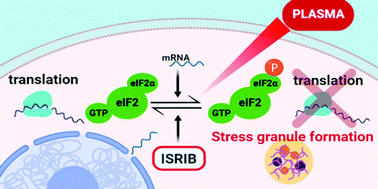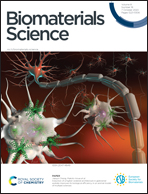Cold atmospheric plasma induces stress granule formation via an eIF2α-dependent pathway†
Abstract
Cold atmospheric plasma is an ionized gas that shows promise in regenerative medical treatments, yet the mechanisms underlying its effects are still poorly understood. Plasma treatment promotes cell growth or cell death depending on the cell type and exposure parameters. To date, no early cell response to plasma, such as stress granule (SG) formation has been addressed. Cytoplasmic SGs are formed as an immediate cell response to acute stress stimuli by recruitment of over 140 proteins intertwined with cytoplasmic RNAs that leads to transient suspension of protein translation. Encouraged by the plasma effects in regenerative medicine and oncology, the atmospheric pressure plasma jet with argon gas flow is being utilized to treat SH-SY5Y cells with an inducible expression of the stress granule marker G3BP1, to gain an insight into early cell response to plasma and SG formation dynamics. Plasma effectively induces SG formation in the exposed cells in a flow/time-dependent manner, with the SG assembly clearly prompted by plasma-induced oxidative stress. Plasma causes SG formation via eIF2α-signaling, which is repressed with the SG formation inhibitor ISRIB. This insight into the early cell response to plasma treatment may lead to improved therapies in regenerative medicine and cancer treatment.



 Please wait while we load your content...
Please wait while we load your content...